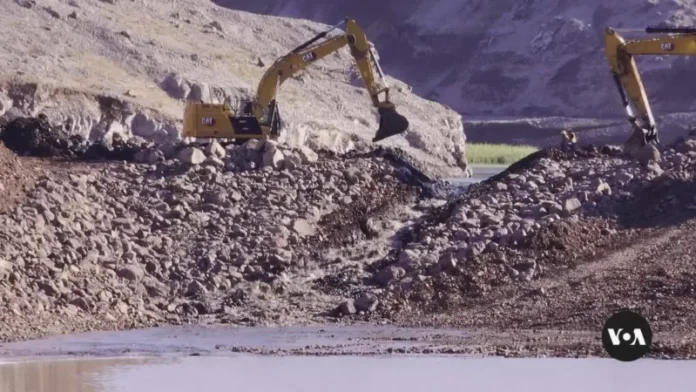For over a century, the Klamath River in California has been blocked by dams, preventing fish from migrating and disrupting the natural flow of the river. However, after years of struggle, the removal of the last of four dams is finally taking place, marking a major victory for Native American communities who rely on the river for their livelihoods.
The Klamath River, the second-largest river in California, has been a vital source of food and cultural significance for the Yurok, Karuk, and Hoopa Valley tribes for thousands of years. But with the construction of dams in the early 1900s, the river’s natural flow was altered, causing a decline in fish populations and disrupting the traditional way of life for these communities.
For decades, the tribes have been fighting for the removal of the dams, which they believe are responsible for the decline of the salmon population. The dams not only block the passage of fish, but they also create warm, stagnant water that is harmful to the salmon’s health. This has had a devastating impact on the tribes, who rely on the salmon for sustenance, cultural ceremonies, and economic opportunities.
But now, after years of negotiations and advocacy, the removal of the dams is finally underway. The first dam, the Copco 1, was removed in 2020, and the second, the Iron Gate, was taken down earlier this year. And just recently, the third dam, the J.C. Boyle, was demolished, leaving only the final dam, the Klamath River’s biggest and most controversial, the 173-foot-tall PacifiCorp’s Klamath River Dam.
The removal of the PacifiCorp’s Klamath River Dam is a major milestone for the tribes and a significant step towards restoring the river’s natural flow. This victory is the result of years of collaboration and partnership between the tribes, environmental groups, and government agencies. It is a testament to the power of community and the determination of the tribes to protect their way of life.
The removal of the dams will have a profound impact on the river’s ecosystem and the surrounding communities. It will allow the salmon to once again migrate freely, restoring the balance of the river and providing a vital food source for the tribes. It will also improve water quality, benefiting not only the fish but also the plants and animals that rely on the river for survival.
But the removal of the dams is not just about restoring the river’s ecosystem; it is also about honoring the tribes’ cultural heritage and their connection to the land. For the Yurok, Karuk, and Hoopa Valley tribes, the Klamath River is more than just a source of food and water; it is a sacred place that holds deep spiritual and cultural significance. The removal of the dams is a step towards healing the wounds caused by the disruption of their way of life and a symbol of hope for future generations.
The removal of the dams also sets a precedent for other dam removal projects across the country. It shows that it is possible to balance the needs of communities and the environment and that collaboration and cooperation can lead to positive outcomes for all involved.
As the last dam is being removed, the tribes are celebrating this historic moment and looking towards the future with optimism and hope. They are determined to continue their efforts to restore the river and preserve their cultural heritage for generations to come.
In conclusion, the removal of the last of four dams on the Klamath River is a major victory for the Yurok, Karuk, and Hoopa Valley tribes and a significant step towards restoring the river’s natural flow. It is a testament to the power of community and collaboration and a symbol of hope for the preservation of our environment and cultural heritage. As we witness this historic moment, let us remember the importance of protecting our natural resources and working together towards a better future for all.

